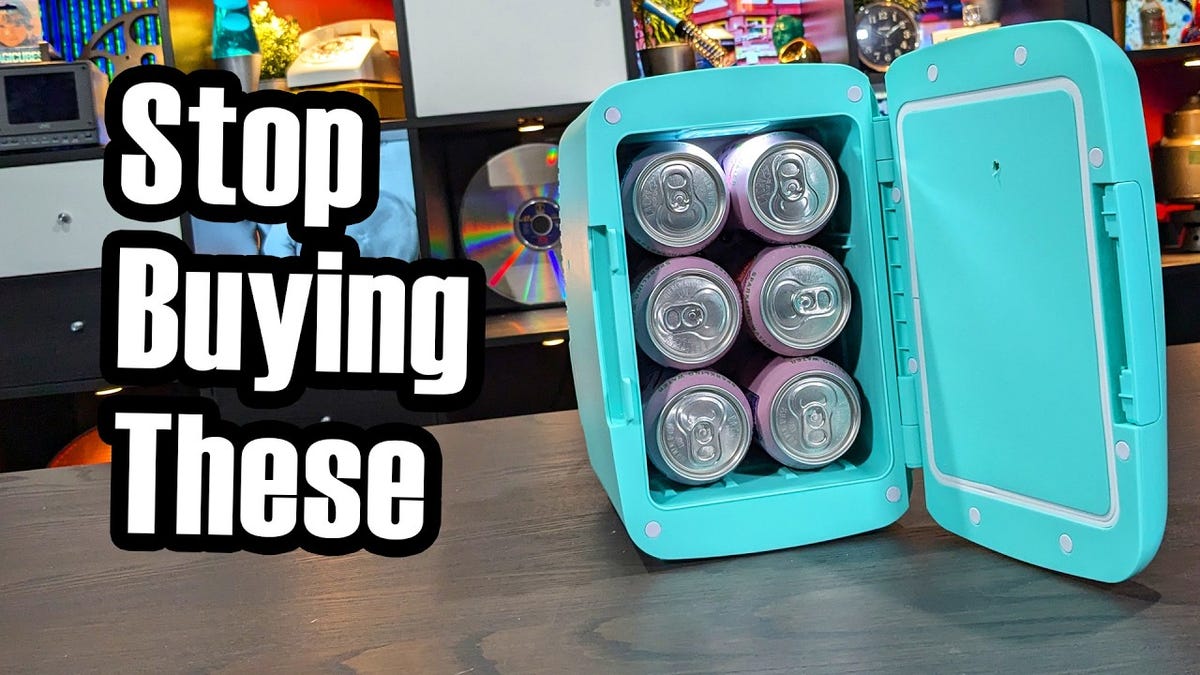For decades, if you wanted cold drinks on a road trip, your only option was to pack a cooler with a bunch of ice. It worked back then, and it still works today, but coolers are heavy and bulky, so it was pretty awesome when some automakers started adding built-in refrigerators in their cars. At least until you try to use one for the first time and realize it actually sucks at cooling drinks down. So why is that?
Well, a big part of the problem is that in-car refrigerators, as well as cooled (and heated!) cupholders, use a different technology than we’re used to at home. You know, the refrigerators that actually work. Instead, they forego refrigerant and a compressor and take advantage of what is known as thermoelectric cooling. Basically, using a device called a Peltier element — named, of course, after French physicist Jean Charles Athanase Peltier who discovered the phenomenon — to cool a plate using nothing but electricity.
On it’s own, that’s pretty neat. Just arrange a bunch of semiconductor junctions between two plates in the right way, and you can make one of those plates cold with some good, old-fashioned DC voltage. Even better, manufacturing efficiency has improved significantly since the early 1800s, so Peltier elements have now gotten ridiculously cheap to buy. Pop one inside a box with some decent insulation, and you’ve just added a fridge to a car for very little money compared to traditional refrigeration without adding any moving parts.
Except you do need moving parts. Electricity doesn’t just magically make things cold. Because while the effect makes one side of the element cold, it makes the other side of the element hot. Plus, it also creates heat while it runs, so the only solution is to bolt it to a big ole heat sink and then run a fan to dissipate the heat.
That’s not a problem on its own, but it does add complexity. The biggest problem is that Peltier elements just aren’t very good at taking a lot of heat out of a space. As you can see in the video below at about the 6:30 mark, when testing a standalone thermoelectrically cooled fridge, the temperature of the air only got down to about 45 degrees after running for 24 hours. That’s just the air temperature, though. When they tested the temperature of the liquid inside the cans, it was even warmer at 50 degrees.
If you want to cool down a few St. Bernardus Abt 12s to drink tomorrow, that wouldn’t be a problem, but most people probably want their Spindrifts a good bit cooler than that, and refrigerators that use Peltier elements just aren’t going to cut it. Oh, and did I mention they also use a ton of electricity? You could run an actual minifridge on less electricity than the standalone thermoelectric one uses over the same time period, and it won’t take long to make up the extra cost of a real mini-fridge in energy savings, either.
That said, if you have a built-in car fridge, all of the above things being true doesn’t necessarily mean it’s useless. For example, if you stock it with drinks that are already cold, and it should keep them cold just fine. Just don’t toss a leftover breakfast burrito in there and expect it to be good when you get back a few hours later. ASK ME HOW I KNOW.

